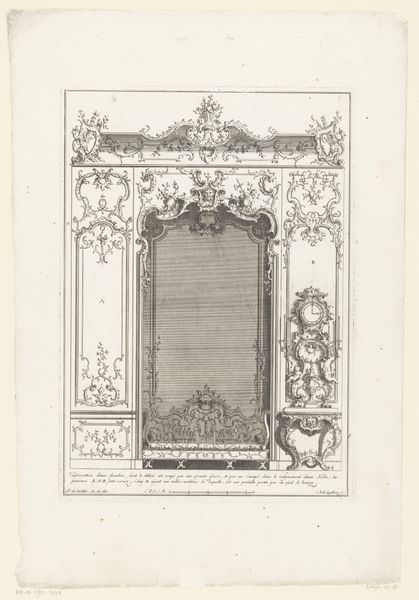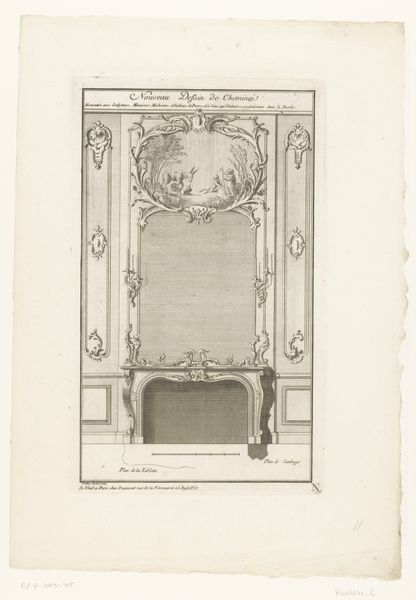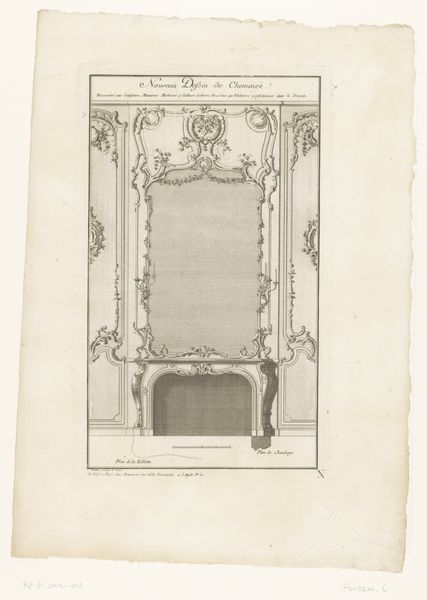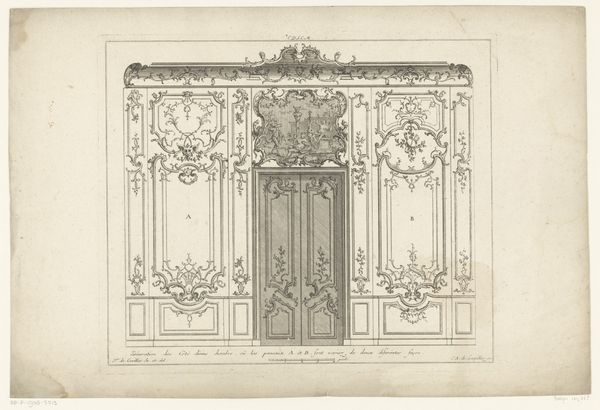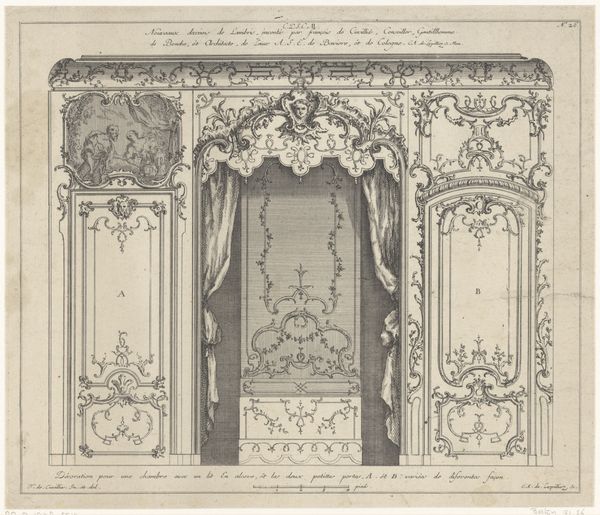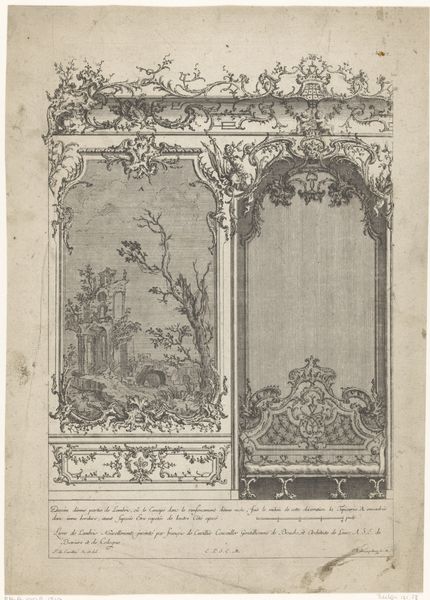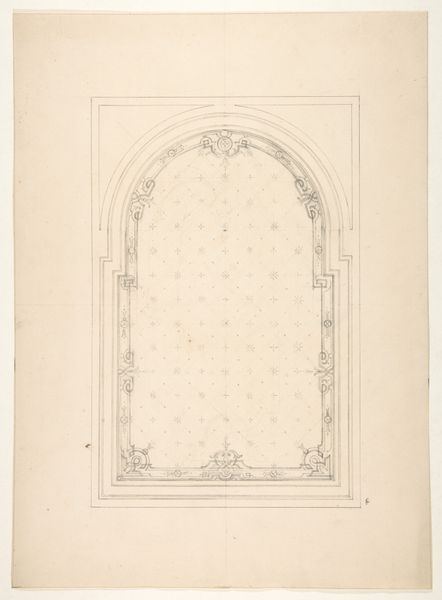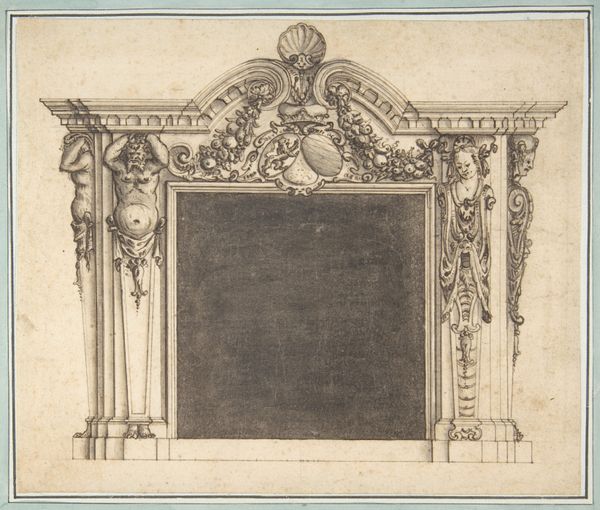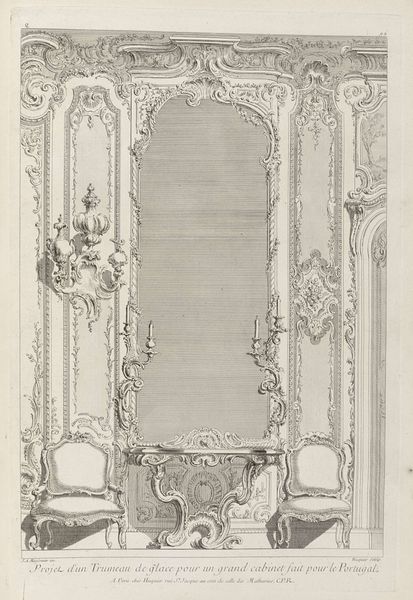
drawing, print, paper, ink, engraving
#
drawing
#
baroque
# print
#
paper
#
form
#
ink
#
line
#
decorative-art
#
engraving
Dimensions: height 339 mm, width 238 mm
Copyright: Rijks Museum: Open Domain
This print, made by Carl Albert von Lespilliez, shows a design for mirrored panels and a commode. The commode and mirror, recurring features of elite interiors, represent far more than just functional objects. They speak to the rise of the individual and the culture of display in 18th-century Europe. Produced in France, this image is reflective of the era’s obsession with elegance and status. The Rococo style, with its elaborate curves and natural motifs, became closely associated with the French aristocracy and its cultural institutions. The design, probably intended for a wealthy patron, reflects the aspirations and aesthetic values of the elite in pre-revolutionary France. Was this merely a decorative scheme, or did the mirror and commode also serve as a silent affirmation of social hierarchy? To really understand the print, one can delve into period architectural treatises, furniture catalogs, and social histories. These resources shed light on the cultural significance of interior design and its role in shaping social identities. By understanding the context, we can truly appreciate how art reflects, and sometimes challenges, the society that creates it.
Comments
No comments
Be the first to comment and join the conversation on the ultimate creative platform.

